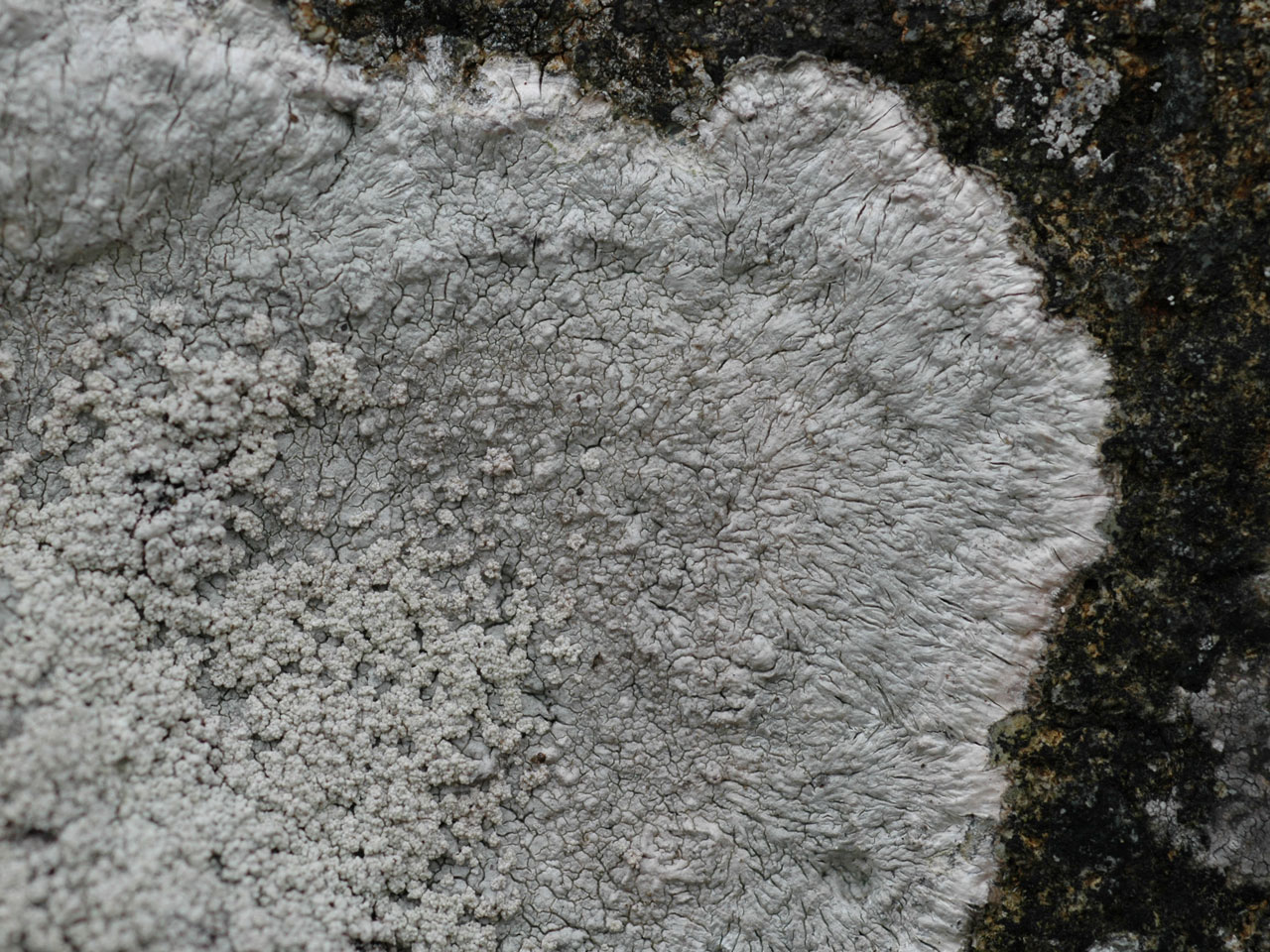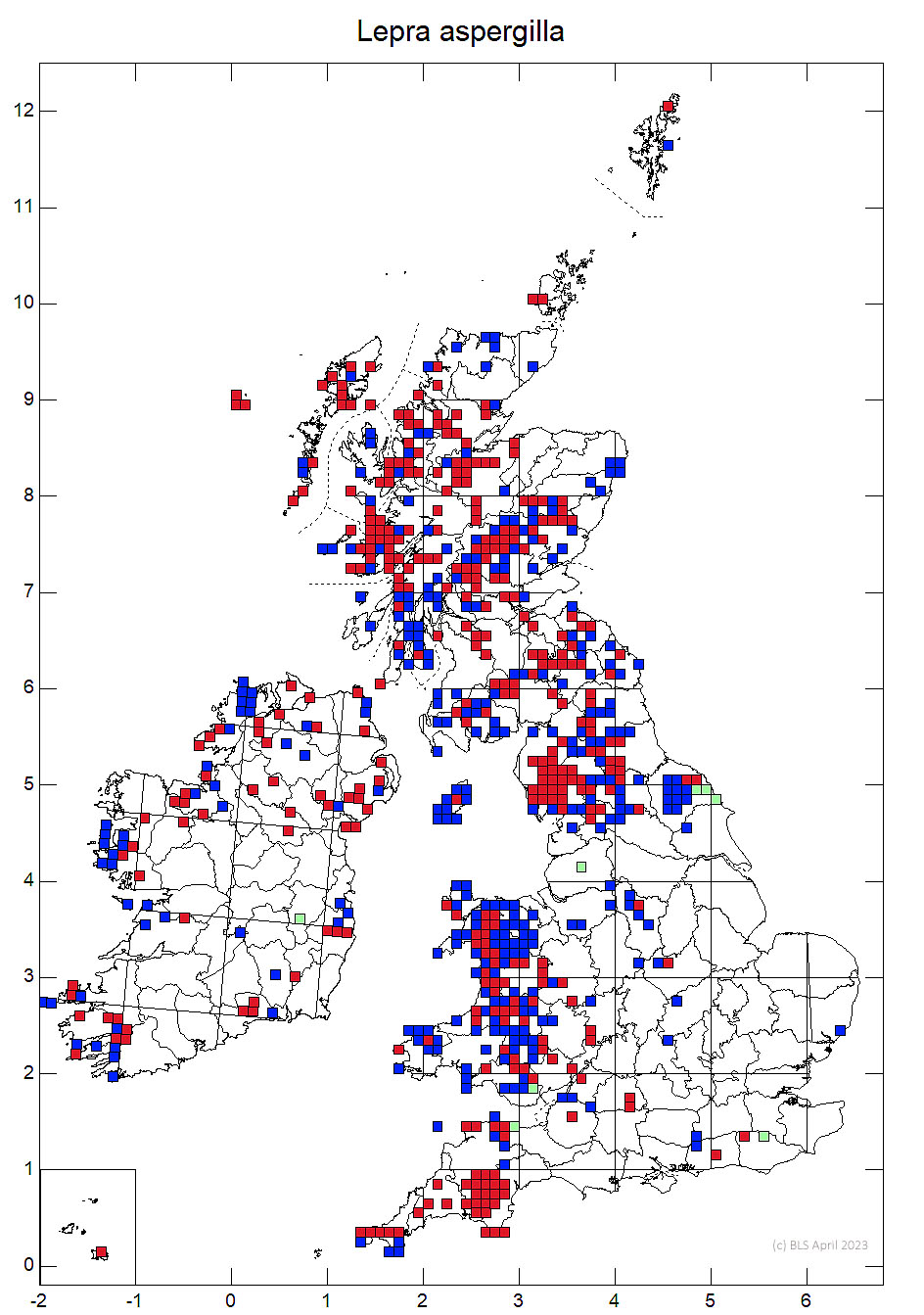Lepra aspergilla
A sorediate Lepra of siliceous rock, mainly found in the uplands. Characterised by the small, pale, punctiform soralia and the Pd+ orange-rust red spot test.
Thallus rather thin to moderately thick, even, sometimes ± fissured or cracked-areolate; prothallus indistinct, marginal, often paler; upper surface pale or dark grey; soralia ± evenly scattered, to 1 mm diam., white,punctiform, flat or somewhat convex, rounded; isidia very rare, small, cylindrical. Apothecia unknown. Thallus C–, K+ dirty yellow-brown, KC+ yellow-red, Pd+ orange-rust red, UV– (fumarprotocetraric (major), succinprotocetraric (major) and ± protocetraric acids).
Characterised by the small, pale, punctiform soralia and succinprotocetraric acid in concentration above or equal to fumarprotocetraric acid. The soralia in L. amara are KC+ violet and taste bitter; those in Varicellaria lactea are C+ red; L. excludens is K+ red and mild-tasting; specimens on lignum in relict Scottish pine woodlands previously referred here are L. borealis. See also L. leucosora.
On siliceous outcrops, scree and walls, mainly upland.

Fairly frequent and widespread except in S.E. and C. England.
Cannon, P., Kukwa, M., Coppins, B., Fletcher, A., Sanderson, N. & Simkin, J. (2021). Pertusariales: Ochrolechiaceae, including the genera Lepra, Ochrolechia and Varicellaria. Revisions of British and Irish Lichens 5: 1-17. Link
Text by Neil A. Sanderson based on Cannon et al (2021)


